Two organic compounds (A) and (B) containing 62.01% C and 10.3% H react with HCN in different manners to produce (C ) and (D), respectively. Subsequent hydrolysis of (C ) and (D) gives optically active compounds (E ) and (F). Both (E ) and (F) on decarboxylation give the same compound (G). Identify the compounds (A) to (G).
C=62.01% , H=10.3%, O=27.69%
Formula of (A) and (B) ⇒C3H6O
The only posible isomers are aldehyde and ketone.
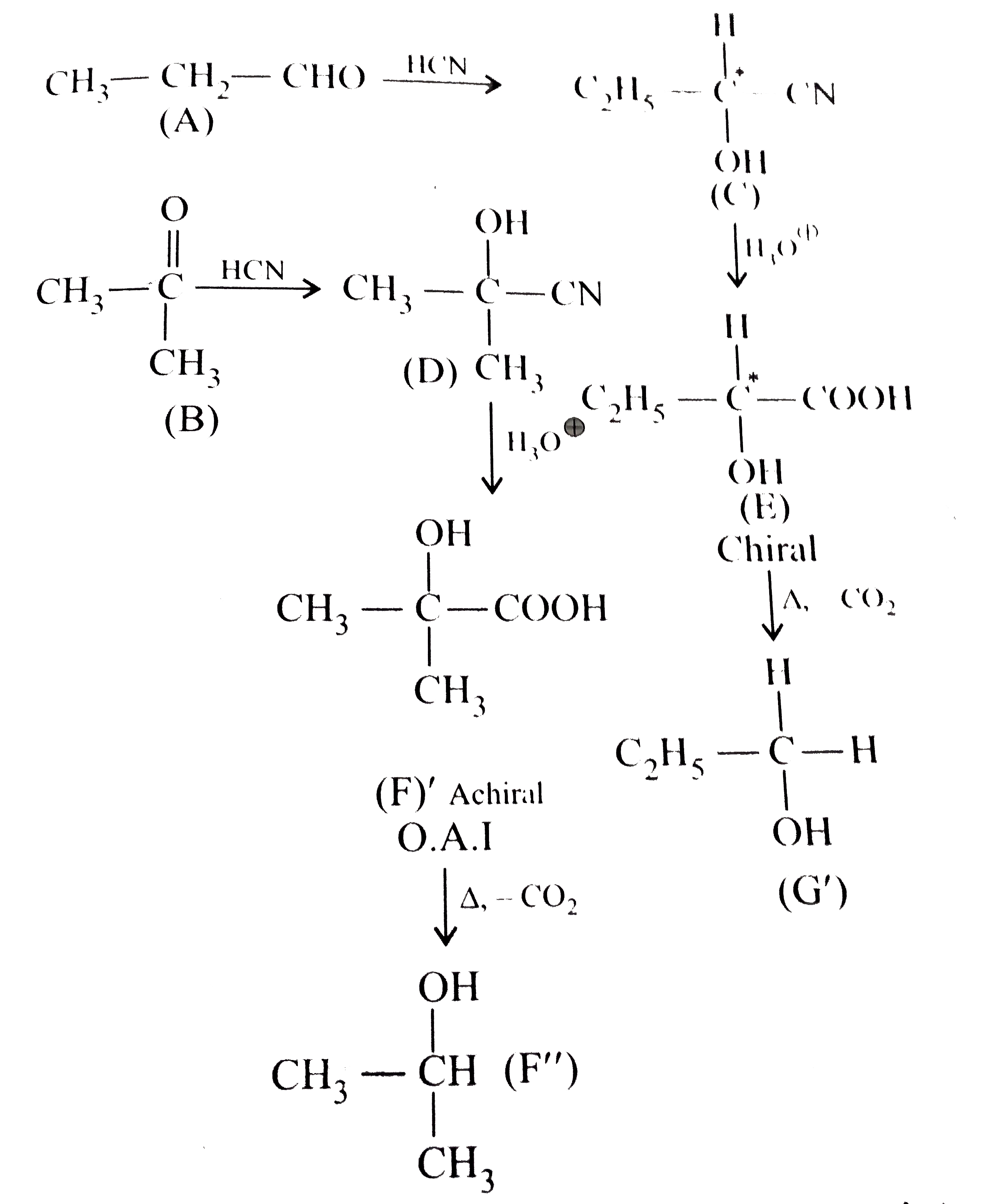
Here, (F'') and (G') are not same. Moreover, (F') is not O.A.
So (B) cannot be ⎛⎜
⎜⎝CH3−O∣∣C−CH3⎞⎟
⎟⎠, the only possibility is:
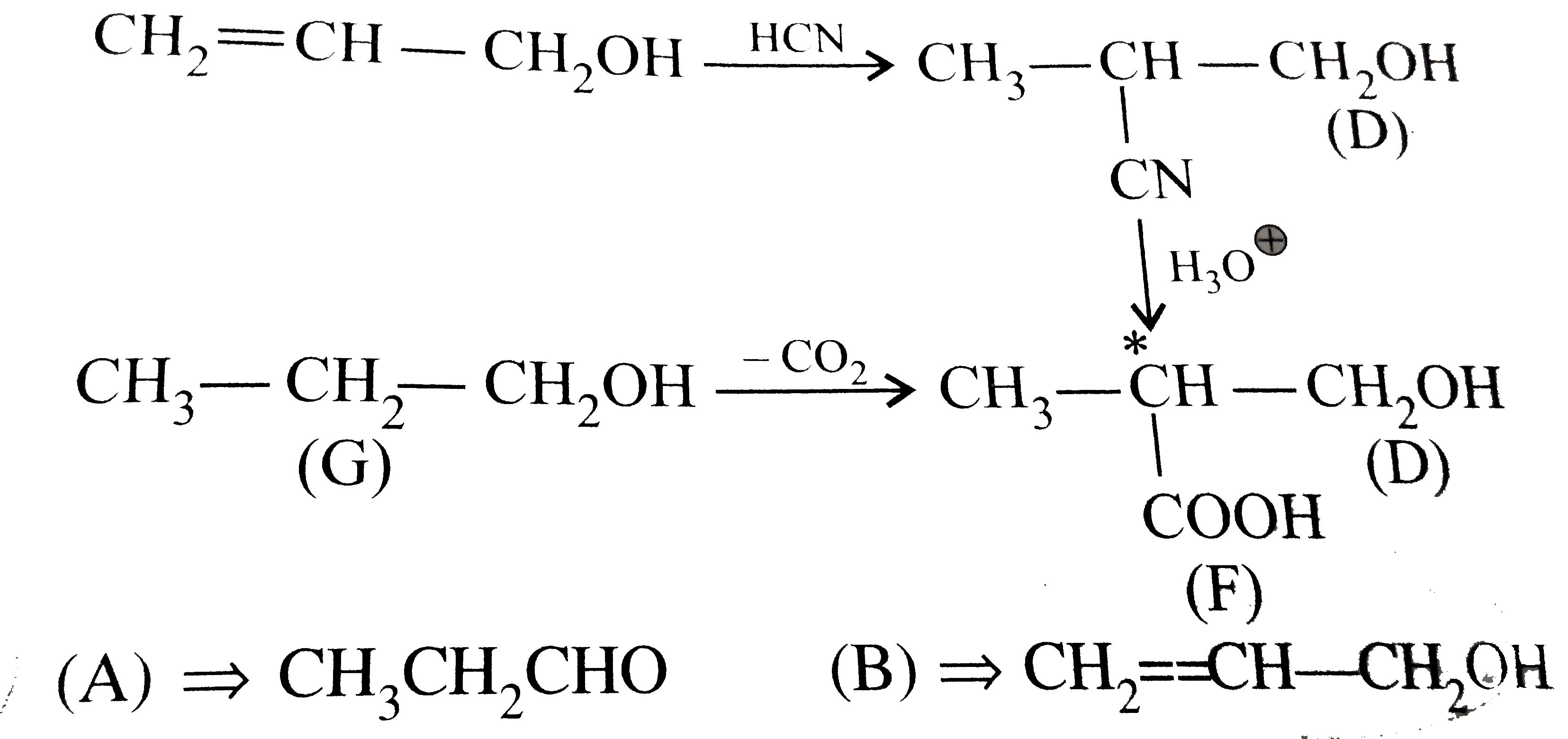
Topper's Solved these Questions
- ALIPHATIC AND AROMATIC ALDEHYDES AND KETONESBOOK - CENGAGE CHEMISTRYCHAPTER - ALIPHATIC AND AROMATIC ALDEHYDES AND KETONESEXERCISE - Exercises Concept Application
20 Videos
- ALIPHATIC AND AROMATIC ALDEHYDES AND KETONESBOOK - CENGAGE CHEMISTRYCHAPTER - ALIPHATIC AND AROMATIC ALDEHYDES AND KETONESEXERCISE - Exercises Linked Comprehension
59 Videos
- ALIPHATIC AND AROMATIC ALDEHYDES AND KETONESBOOK - CENGAGE CHEMISTRYCHAPTER - ALIPHATIC AND AROMATIC ALDEHYDES AND KETONESEXERCISE - Solved Examples
13 Videos
- ALCOHOL,PHENOL AND ETHERSBOOK - CENGAGE CHEMISTRYCHAPTER - ALCOHOL,PHENOL AND ETHERSEXERCISE - Archives Analytical And Descriptive
15 Videos
- AMINESBOOK - CENGAGE CHEMISTRYCHAPTER - AMINESEXERCISE - QUESTION BANK
1 Videos
Similar Questions
Two organic compounds (A) and (B) with molecular formula, C3H6O, react with HCN in different manner to produce (C) and (D) respectively. On subsequent hydrolysis of (C) and (D) gives optically active substances (E) and (F). Both (E) and (F) on decarboxylation give propan -1-ol. What are (A),(B) (C),(E)and (F)?
View SolutionON disuphonatioon followed by fusion with NaOH an dacidificant, an aromatic compound C8H10(A) gives two isomeric comnpounds (B) and (C) (molecular formula C8H10O2. Oxidation of esters of (B) and (C) followed by hydrolysis gives two isomers comnpounds (D) and (E)(C7H6O4) which may be decarboxylated to form C6H6O2(F). Identigy compounds (A) to (F).
View Solution
Knowledge Check
The three compounds (A),(B),and (C) on hydrogenation with H2+Pd give (D),(E) and (F), respectively.
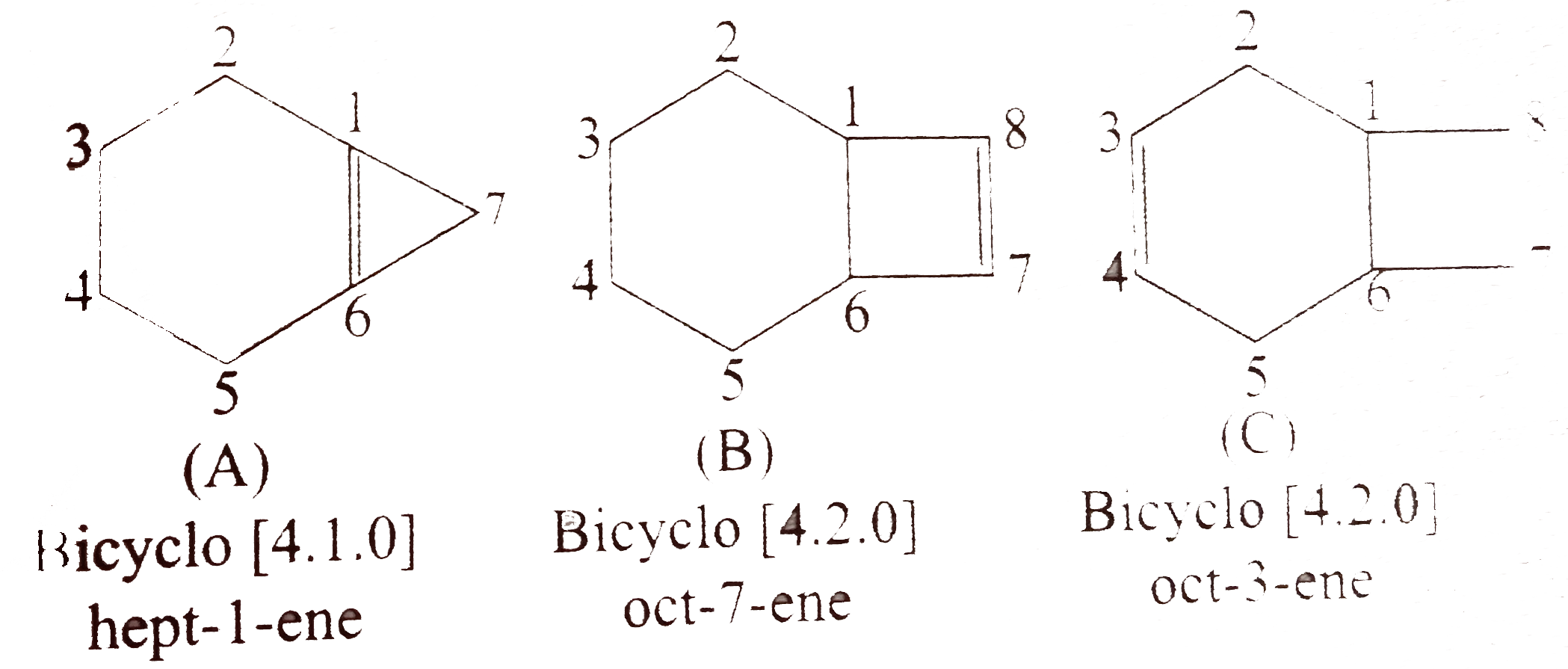
Compounds (D),(E) and (F) are :A B
B C
C D
D
Two isomeric halo alkenes (A) and (B) have molecular formula C5H9Cl. (A) gives optically inactive compound whil (B) give optically active compound in hydrogenation. The two iosmers respectively are:
A3-chloro-1-pentane and 4-chloro-2-penteneB4-chloro-1-pentene and 2-chloro-2-penteneC3-chloro-2-pentene and 1-chloro-2-penteneD1-chloro-1-pentene and 5-chloro-1-penteneAn organic compound (A) C5H10O2 reacts with Br2 in presence of phosphorus to give (B). Compound (B) contains an asymmetric carbon atom and yields (C) on dehydrobromination compound (C) does not show geometrical isomerism and on decarboxylation gives an alkene (D) which on ozonolysis gives E and F. Compound (E) gives positive Schiff test but (F) does not.
Identify correct structure of A:A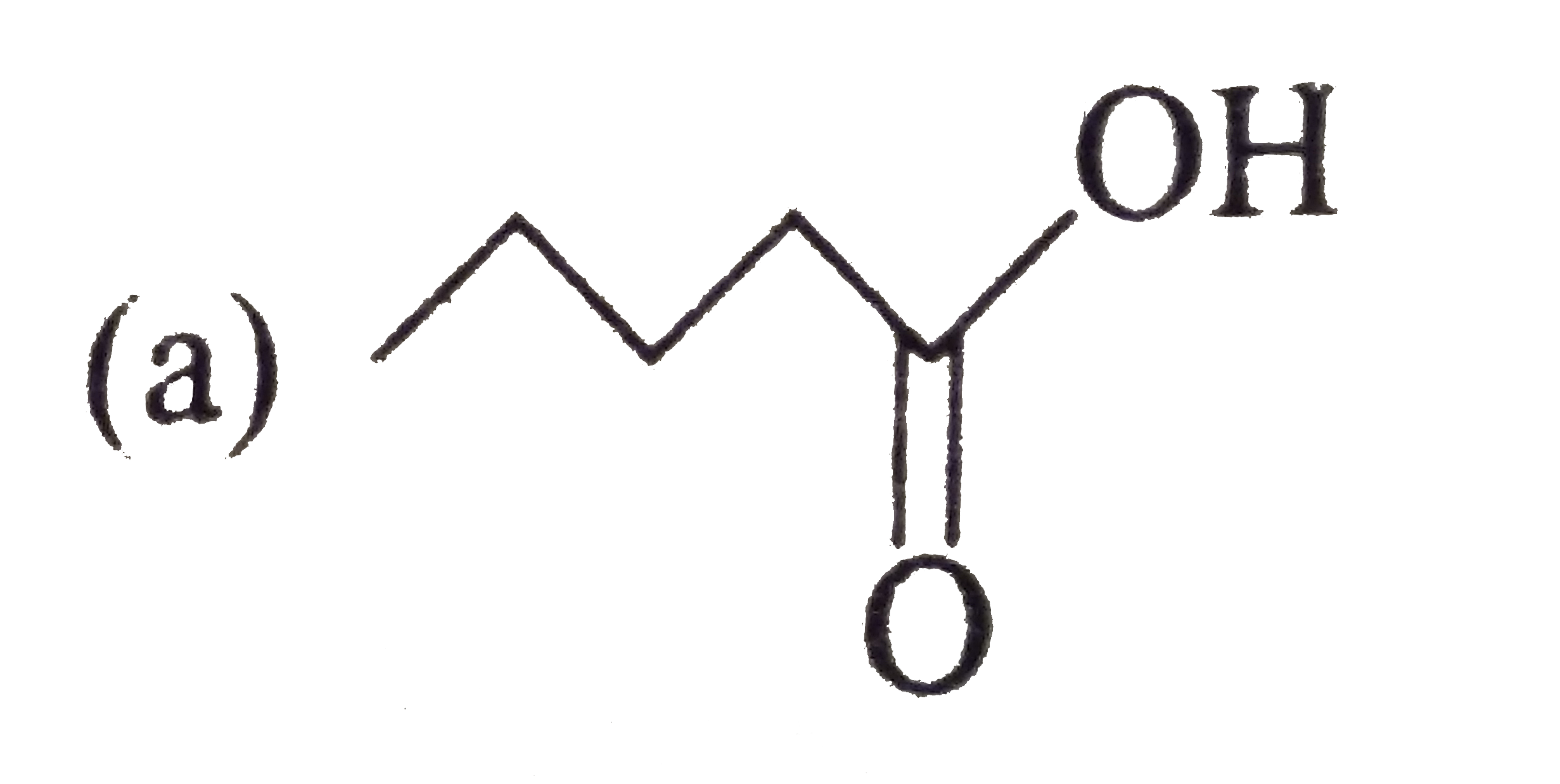 B
B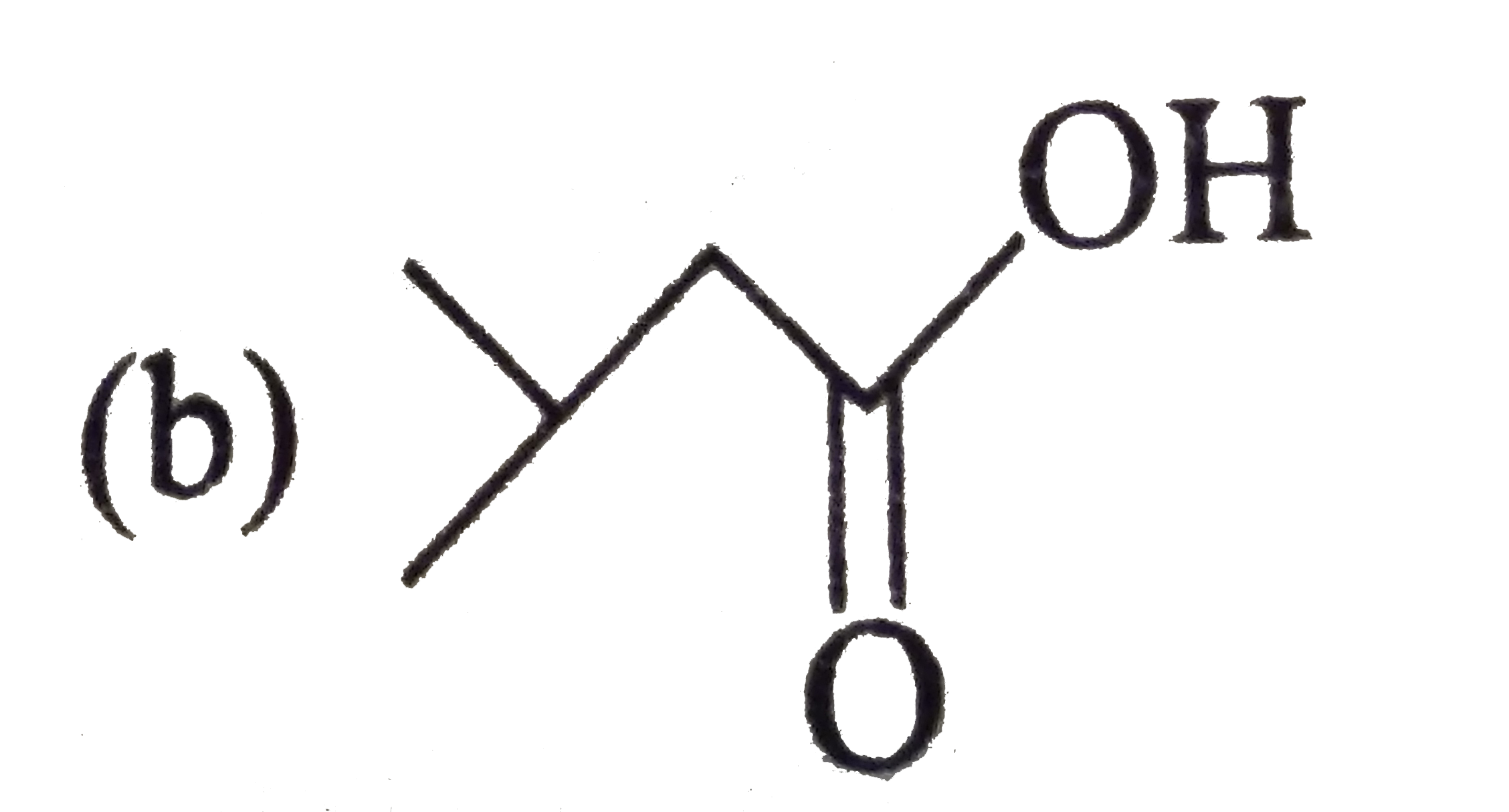 C
C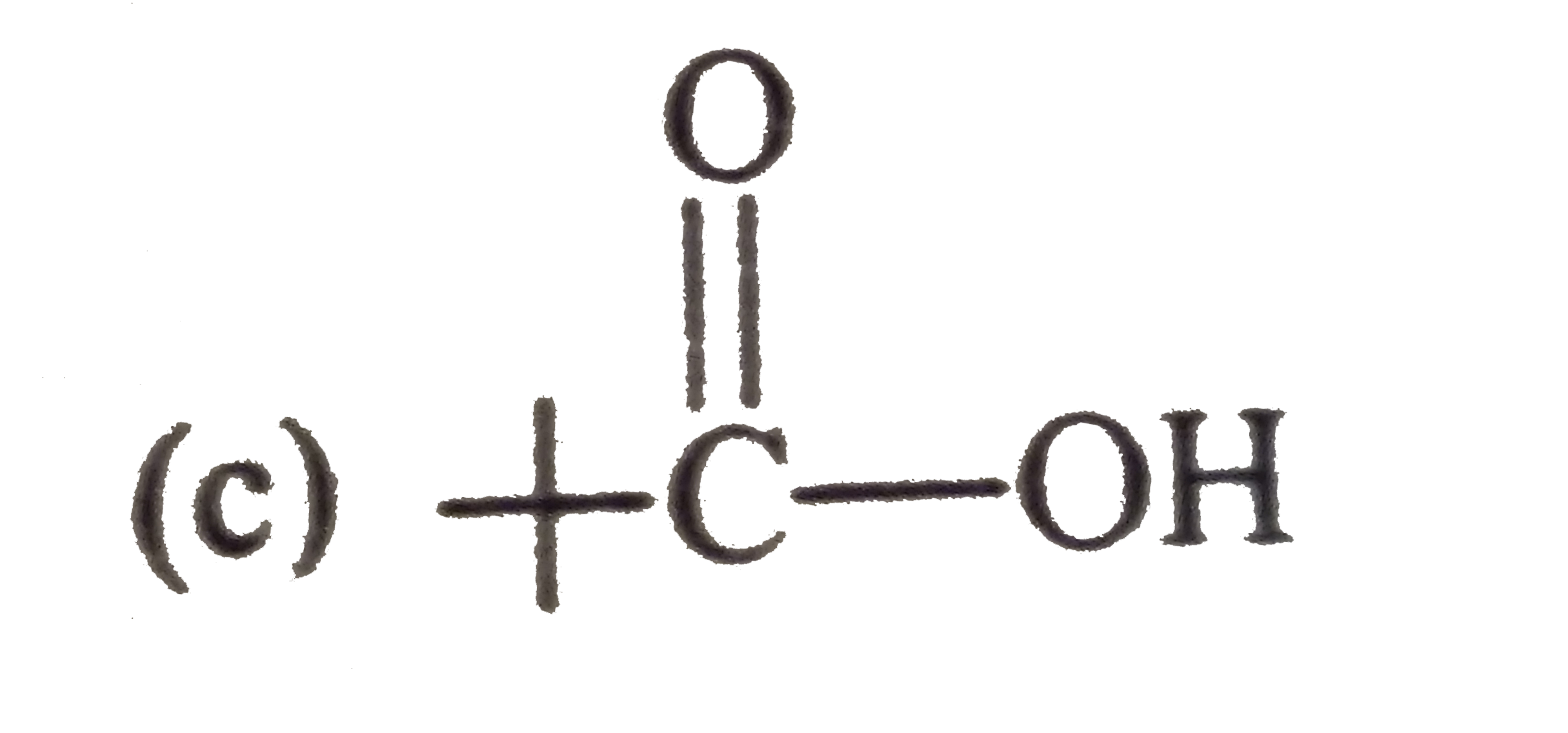 DNone of these
DNone of these
An orgnic compound (A) contains 79.25% C, 5.66% H, and 15.09% O. It has a vapour density of 53 and reduces the Tollens reagent. Action of NaOH on (A) produces (B) and (C ). (B) on controlled oxidation gives (A) which on further oxidation produces (C ). (C ) on distillation with PCl5 gives (D). (D) reacts with aq. NH3 giving (E ) which reacts with NaOH and Br2 forming (F). The latter on reaction which hypo-phoshorus acid yield (H). Identify the compounds (A) to (H).
View SolutionAn organic acid (A), C5H10O2 reacts with Br2 in the presence of phosphorous to give (B). Compound (B) contains an asymmetric carbon atom and yield (C) on dehydrabromination. Compound (C) does not show geometric isomerism and on decarboxylation give an alkene (D) which on ozonolysis gives (E) and (F), compound (E) gives a positive schiff's test but (F) does not. Give structures of (A) to (F) with reasons.
View SolutionAn organic acid (A), C5H10O2 reacts with Br2 in the presence of phosphorus to give (B). Compound (B) contains an asymmetric carbon atom and yields (C ) on dehydrbomination. Compound (C ) does not show geometric isomerism and on decarboxylation gives on alkene (D) which on ozonolysis gives (E) and (F). Compound (E) gives a positive Schiff's test but (F) does not. Give the structures of (A) to (F) with reasons.
View SolutionAn organic compound (A) C5H10O2 reacts with Br2 in presence of phosphorus to give (B). Compound (B) contains an asymmetric carbon atom and yields (C) on dehydrobromination compound (C) does not show geometrical isomerism and on decarboxylation gives an alkene (D) which on ozonolysis gives E and F. Compound (E) gives positive Schiff test but (F) does not.
Find out structure of D :
View SolutionAn organic compound (A) C5H10O2 reacts with Br2 in presence of phosphorus to give (B). Compound (B) contains an asymmetric carbon atom and yields (C) on dehydrobromination compound (C) does not show geometrical isomerism and on decarboxylation gives an alkene (D) which on ozonolysis gives E and F. Compound (E) gives positive Schiff test but (F) does not.

View Solution
